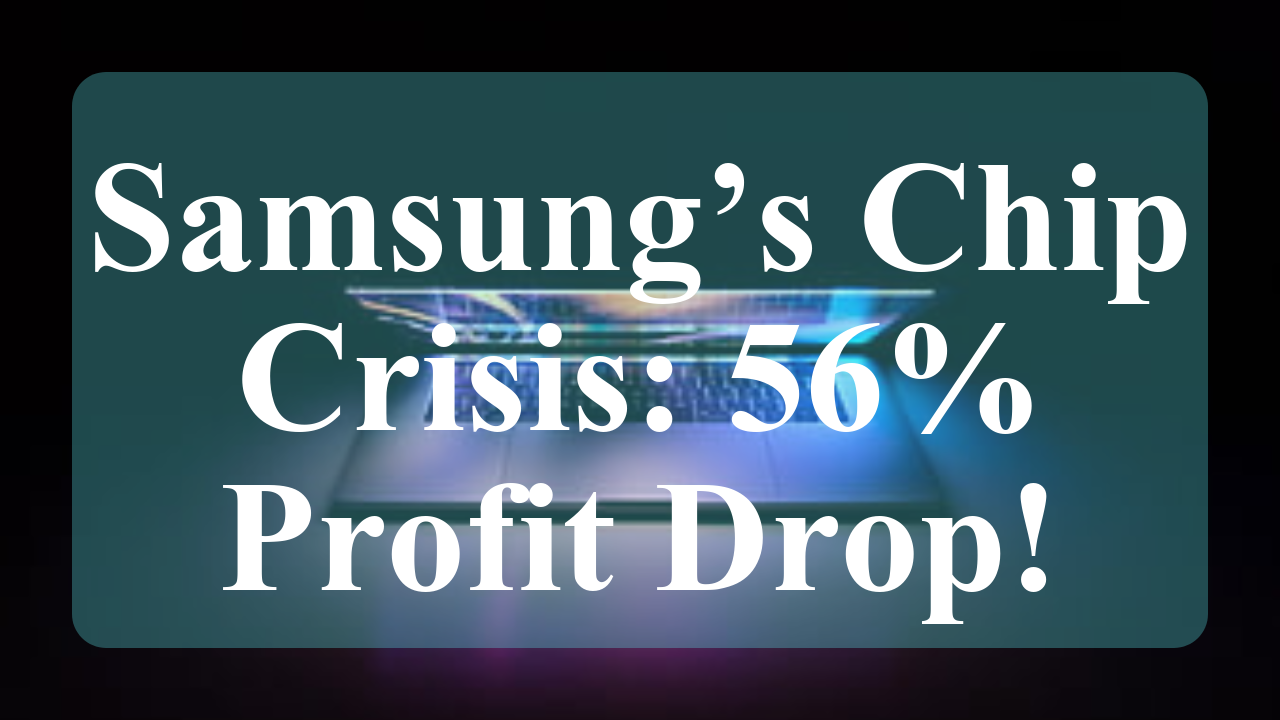Samsung Electronics faces a 56% profit drop in Q2 2025, driven by U.S. AI chip export curbs to China, delays in high-bandwidth memory (HBM) chip supply, and foundry struggles. Despite a slight revenue dip, the company anticipates a Q3 rebound with improved HBM demand and new smartphone launches, but competition from SK Hynix and TSMC looms large.
Samsung’s Semiconductor Woes: Unpacking the Q2 2025 Profit Slump
Massive Profit Decline: Samsung Electronics reported a 55.9% year-on-year drop in Q2 operating profit, totaling 4.59 trillion won ($3.4 billion), missing analyst expectations of 6.2 trillion won. The semiconductor division, a key profit driver, saw profits plummet due to inventory adjustments and weak AI chip sales.
U.S. Export Curbs Impact: U.S. restrictions on advanced AI chip exports to China, citing military concerns, severely hit Samsung’s foundry business, which relies heavily on Chinese demand. These curbs led to underutilized high-tech chip facilities and significant inventory write-downs.
HBM Delays and Nvidia Setback: Delays in shipping high-bandwidth memory (HBM) chips, particularly the 12-layer HBM3E, to Nvidia contributed to the slump. Reports indicate Samsung failed Nvidia’s quality tests for the third time in June, with its next opportunity in September.
Foundry Struggles: Samsung’s foundry business faced weak orders and intense competition from Taiwan Semiconductor Manufacturing Company (TSMC). The company’s foundry market share dropped from 19% in 2019 to 8%, with its Texas fab development delayed due to a lack of customers.
Competitor Advantage: Rivals SK Hynix and Micron have capitalized on robust U.S. demand for AI-driven memory chips, particularly HBM4. SK Hynix, Nvidia’s primary HBM4 supplier, shipped 12-layer samples ahead of schedule, while Samsung lags in securing a lead.
Inventory and Currency Challenges: A one-time inventory cost on unsold AI chips and a strong South Korean won in Q2 further eroded profits. Analysts noted that unsold HBM chips intended for Nvidia likely contributed to significant write-downs.
Optimism for Recovery: Samsung expects a Q3 rebound, driven by rising demand for premium HBM chips and better foundry utilization. The launch of the Galaxy Z Fold 7 and Z Flip 7, powered by Samsung’s Exynos 2500 chip, may also boost its logic chip business.
India’s Role in Samsung’s Strategy: Despite the semiconductor slump, Samsung is strengthening its presence in India’s smartphone market, reclaiming the No. 2 spot in early 2025. Its focus on AI-powered features and rural retail expansion signals India’s importance as a growth hub.
Disclaimer: This article is based on recent news reports, industry analyses, and posts on X, compiled to provide accurate and timely information. Data is sourced from reputable outlets like Reuters, The Hindu, and Times of India. Readers are advised to verify financial details through official Samsung reports.




